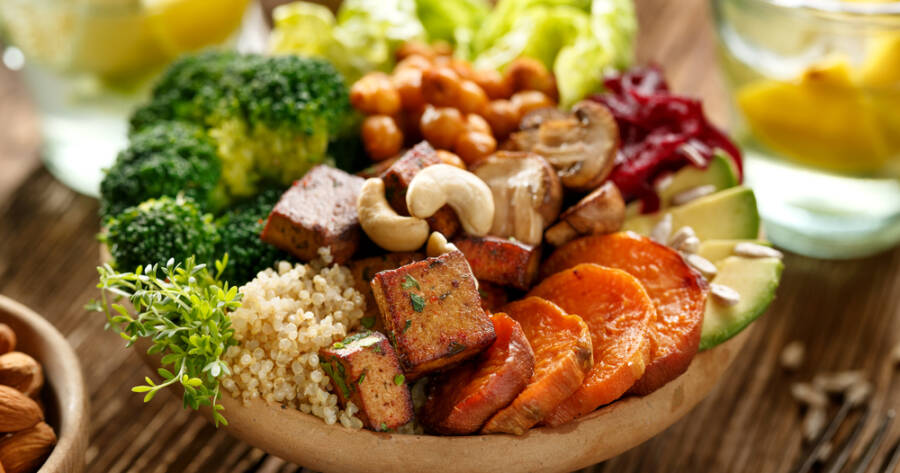Switching to a plant-based diet doesn’t have to be overwhelming or restrictive. For many Americans, it’s a step toward eating more whole foods, reducing environmental impact, and feeling healthier overall. The key is making the transition thoughtfully—without giving up flavor, nutrition, or satisfaction. A smart approach focuses on gradual changes, balanced meals, and long-term habits. Whether you’re cutting back on meat or going fully plant-based, understanding practical steps can make the switch simple and sustainable.
Step 1: Start Small and Build Gradually
One of the most common mistakes when transitioning to a plant-based diet is trying to change everything at once. Your body—and your taste buds—need time to adjust. Start by dedicating one or two days per week to plant-based eating, such as the popular “Meatless Monday.” Gradual changes are easier to maintain and allow you to learn new recipes and flavors along the way.
Focus first on swapping familiar meals. For example, replace ground beef in tacos with lentils or seasoned tofu. Try plant-based milk in your morning coffee or oatmeal. Small substitutions help you discover alternatives you enjoy without feeling deprived. Over time, these habits naturally add up to a mostly or fully plant-based diet.
Step 2: Focus on Whole Foods, Not Processed Substitutes
The market for plant-based meats, cheeses, and ready-made meals has grown rapidly—but many of these products are highly processed. While they can make the transition easier, relying on them too heavily can leave you short on nutrients and long on sodium.
Instead, aim for meals built around whole ingredients like beans, lentils, grains, nuts, seeds, fruits, and vegetables. These foods are naturally rich in fiber, protein, and vitamins while being low in saturated fat. For instance, a bowl of quinoa, roasted vegetables, and chickpeas drizzled with olive oil provides complete protein and sustained energy.
Processed alternatives can still play a role, especially when convenience is needed, but they should complement—not replace—whole, nutrient-dense foods.
Step 3: Make Sure You’re Getting Key Nutrients
A well-planned plant-based diet can provide everything your body needs, but it requires awareness of certain nutrients that are more abundant in animal products. Protein, vitamin B12, iron, and omega-3 fatty acids are particularly important to monitor.
Protein is easy to get through legumes, tofu, tempeh, quinoa, nuts, and seeds. For iron, look to foods like lentils, spinach, and fortified cereals. Pairing these with vitamin C-rich foods—like citrus or bell peppers—helps improve absorption.
Vitamin B12, however, is harder to get from plants alone. Nutrition experts recommend fortified foods or supplements to ensure adequate intake. Similarly, omega-3s can come from flaxseed, chia seeds, walnuts, or algae-based supplements.
If you’re unsure where to start, consider consulting a registered dietitian who specializes in plant-based nutrition to help you build a well-rounded plan.
Step 4: Plan Ahead to Stay Consistent
Meal planning is one of the most effective ways to stay on track with a plant-based diet. Planning ahead ensures you have healthy, satisfying meals ready when hunger strikes—reducing the temptation to revert to old habits.
Start by preparing a few staple foods each week, such as cooked grains, roasted vegetables, or a pot of beans. These can be mixed and matched for quick meals. Overnight oats for breakfast, a grain bowl for lunch, and a hearty vegetable stir-fry for dinner make it easy to eat well without stress.
Keeping nutritious snacks on hand—like trail mix, hummus with veggies, or fruit—also helps you avoid processed convenience foods. The more prepared you are, the smoother your transition will feel.
Step 5: Make It Enjoyable and Flexible
The most successful plant-based diets are flexible and enjoyable, not rigid. Perfection isn’t the goal—progress is. If you occasionally eat animal products, it doesn’t mean you’ve failed. Instead, focus on making plant-based meals the foundation of your diet.
Experiment with global cuisines that naturally emphasize plant foods, such as Mediterranean, Indian, or Thai dishes. These feature rich spices, herbs, and sauces that add variety and excitement. Trying new ingredients—like tempeh, jackfruit, or nutritional yeast—can open up flavors you might not expect from a meat-free diet.
Most importantly, listen to your body. If a certain food leaves you unsatisfied, explore alternatives that provide similar texture or flavor. The goal is to create a way of eating that supports both your health and enjoyment of food.
Step 6: Stay Motivated by Your “Why”
Lasting change comes from understanding why you’re making it. Some people adopt plant-based diets for health reasons, others for environmental or ethical ones. Whatever your motivation, remind yourself of it when challenges arise.
Tracking how you feel—physically and mentally—can reinforce your progress. Many people notice better digestion, improved energy, and clearer skin within weeks of increasing plant-based foods. Seeing those results helps maintain momentum.
You can also find motivation in community. Joining online forums, attending local cooking classes, or following plant-based chefs and creators can inspire new ideas and keep you connected to your goals.
A Balanced Approach to Better Living
Transitioning to a plant-based diet doesn’t have to be restrictive or complicated. By taking small steps, focusing on whole foods, planning ahead, and staying flexible, you can create a lifestyle that’s both nourishing and sustainable.
The smartest approach is one that fits your needs and evolves with you. Whether you go fully plant-based or simply add more plant foods to your diet, each choice contributes to better health, a lighter footprint, and a stronger connection to what you eat.

